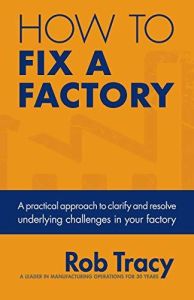Join getAbstract to access the summary!

Join getAbstract to access the summary!
Rob Tracy
How to Fix a Factory
A Practical Approach to Clarify and Resolve Underlying Challenges in Your Factory
Paper Raven Books, 2019
What's inside?
Follow a five-step program to bring a dysfunctional factory back to productive health.
Recommendation
All factories struggle, writes seasoned manufacturing executive Rob Tracy. Sooner or later, your plant will fall behind in on-time delivery, your workforce will lose morale and the production calendar will fill up with emergency “hot list” scheduling. Tracy points out that getting a factory back in shape may be hard, but it’s not complicated. He explains step-by-step how to identify weaknesses, set attainable goals, get the cooperation of the whole organization and make improvements that last.
Summary
About the Author
Rob Tracy has worked in manufacturing for more than 30 years, including several terms in senior executive positions.

















Comment on this summary